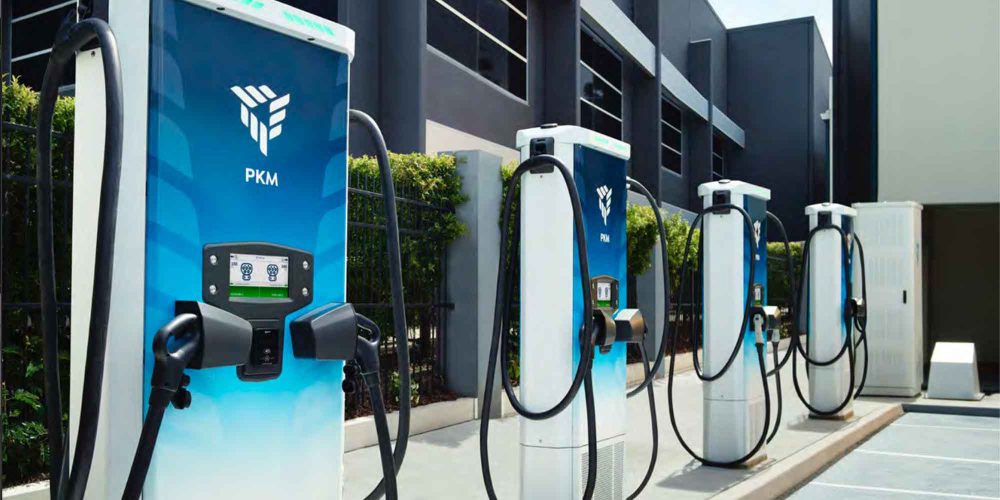
Direct current fast charger manufacturer Tritium has officially opened the doors of its new EV charger manufacturing facility in Lebanon, Tennessee – its first production footprint in the United States. With it, Tritium intends to bring over 500 new jobs to the state.
Tritium ($DCFC) is a global manufacturer of hardware and software for DC fast chargers (DCFCs) founded in 2001, operating out of offices in the US and Europe.
Tritium’s EV charging products have been used by partners like Aqua superPower to expand electric boat charging on waterways around the world. On land, EV charging networks like Loop have also utilized Tritiums fast chargers in the United States.
This past February, Tritium announced a new manufacturing facility coming to the United States on the same day company CEO Jane Hunter met with President Biden.
Tritium also shared that all DC fast chargers built at the upcoming US facility are expected to comply with applicable Buy America Act provisions for domestic sourcing, as part of The Infrastructure Investment and Jobs Act. Hunter said the following at the time:
Tritium’s investment in a US-based, cutting-edge facility for manufacturing is part of our strong push toward global growth in support of the e-mobility industry. We are thrilled to work with the US Federal government and the State of Tennessee on this initiative. With the help of the hard-working residents of Tennessee, we expect to double or even triple our charger production capacity to further our product distribution throughout the United States.
Now, just six months later, Tritium is opening its first manufacturing facility in the United States, which is expected to produce up to 30,000 DC fast chargers per year at peak capacity.

Tritium’s new United States facility to produce RTM/PKM150
Tritium marked the opening celebration with a press release, sharing some of its plans for manufacturing in the United States, more specifically Tennessee. Tritium CEO Jane Hunter spoke again today:
The opening of our Tennessee factory is an important milestone for Tritium, for Tennessee and most importantly, for American drivers. As many as 35 million electric vehicles are expected to be in use by 2030 and those vehicles will require more powerful and convenient charging infrastructure. It’s crucial that America’s charging infrastructure is built right here in the US. Americans will rely on it to get to work, to school, to doctor’s appointments, and more. It needs to be reliable, and it needs to be able to grow to meet their needs. And when we make chargers here in the US, we reduce supply chain and shipping delays, and we help build the manufacturing ecosystem that will employ more Americans.
The facility will initially begin operations with the production of its RTM DC fast chargers capable of charge speeds up to 75 kW. Tritium explained how effective its new DCFCs built in the United States can be in supporting new legislation to expand EV adoption:
These advanced DC fast chargers are compatible with all EVs, are compact, reliable, and cost effective, and are expected to fulfill requirements for the recently enacted Inflation Reduction Act (IRA), which provides $370 billion for climate change initiatives to help reduce carbon emissions by roughly 40 percent by 2030. Additionally, Tritium’s PKM150 fast charger is expected to meet Federal Highway Administration (FHWA) Buy America Act standards in Q1 2023, making that fast charger an ideal candidate for National Electric Vehicle Infrastructure (NEVI) program funding.
According to the company, RTM charger production will be followed by the PKM150 (pictured above) in 2023. These newer DC fast chargers will provide more flexibility to owners as they can deliver charge rates of either 100 or 150 kW and up to four can be connected to one power cabinet.
Subscribe to Electrek on YouTube for exclusive videos and subscribe to the podcast.
Author: Scooter Doll
Source: Electrek



